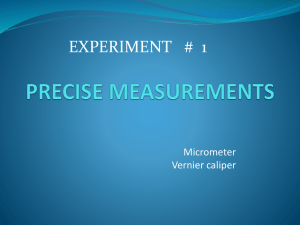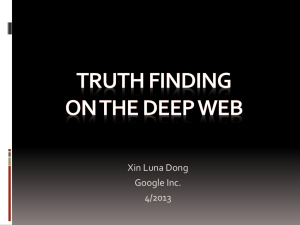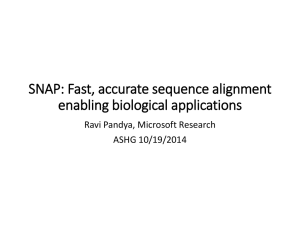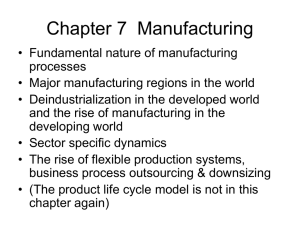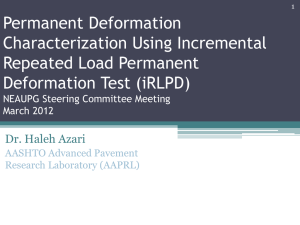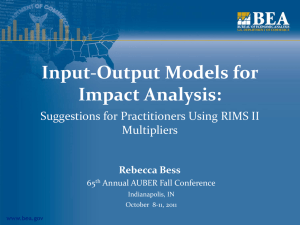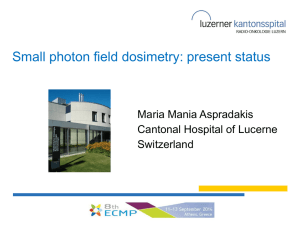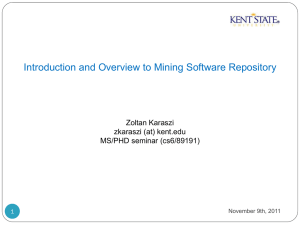Presentation
advertisement
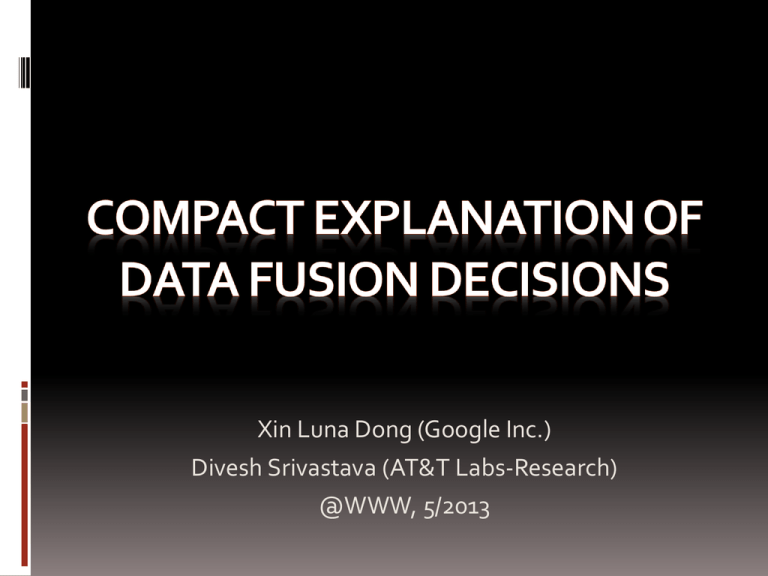
Xin Luna Dong (Google Inc.)
Divesh Srivastava (AT&T Labs-Research)
@WWW, 5/2013
Conflicts on the Web
FlightView
FlightAware
Orbitz
6:15 PM
6:22 PM
6:15 PM
9:40 PM
8:33 PM
9:54 PM
Copying on the Web
Data Fusion
S1
S2
S3
S4
S5
Stonebraker
MIT
berkeley
MIT
MIT
MS
Dewitt
MSR
msr
UWisc
UWisc
UWisc
Bernstein
MSR
msr
MSR
MSR
MSR
Carey
UCI
at&t
BEA
BEA
BEA
Halevy
Google
google
UW
UW
UW
Data fusion resolves data conflicts and finds the
truth
Data Fusion
S1
S2
S3
S4
S5
Stonebraker
MIT
berkeley
MIT
MIT
MS
Dewitt
MSR
msr
UWisc
UWisc
UWisc
Bernstein
MSR
msr
MSR
MSR
MSR
Carey
UCI
at&t
BEA
BEA
BEA
Halevy
Google
google
UW
UW
UW
Data fusion resolves data conflicts and finds the
truth
Naïve voting does not work well
Data Fusion
S1
S2
S3
S4
S5
Stonebraker
MIT
berkeley
MIT
MIT
MS
Dewitt
MSR
msr
UWisc
UWisc
UWisc
Bernstein
MSR
msr
MSR
MSR
MSR
Carey
UCI
at&t
BEA
BEA
BEA
Halevy
Google
google
UW
UW
UW
Data fusion resolves data conflicts and finds the
truth
Naïve voting does not work well
Two important improvements
Source accuracy
Copy detection
But WHY???
An Exhaustive but Horrible Explanation
Three values are provided for Carey’s affiliation.
I. If UCI is true, then we reason as follows.
1)
Source S1 provides the correct value. Since S1
has accuracy .97, the probability that it provides
this correct value is .97.
2)
Source S2 provides a wrong value. Since S2 has
accuracy .61, the probability that it provides a
wrong value is 1-.61 = .39. If we assume there
are 100 uniformly distributed wrong values in
the domain, the probability that S2 provides the
particular wrong value AT&T is .39/100 = .0039.
3)
4)
Source S3 provides a wrong value. Since S3 has
accuracy .4, … the probability that it provides
BEA is (1-.4)/100 = .006.
Source S4 either provides a wrong value
independently or copies this wrong value from
S3. It has probability .98 to copy from S3, so
probability 1-.98 = .02 to provide the value
independently; in this case, its accuracy is .4, so
the probability that it provides BEA Is .006.
5)
Source S5 either provides a wrong value
independently or copies this wrong value
fromS3 orS4. It has probability .99 to copy
fromS3 and probability .99 to copy fromS4, so
probability (1-.99)(1-.99) = .0001 to provide the
value independently; in this case, its accuracy is
.21, so the probability that it provides BEA is
.0079.
Thus, the probability of our observed data
conditioned on UCI being true is
.97*.0039*.006*.006.02*.0079.0001 = 2.1*10-5.
II. If AT&T is true, …the probability of our observed
data is 9.9*10-7.
III. If BEA is true, … the probability of our observed
data is 4.6*10-7.
IV. If none of the provided values is true, … the
probability of our observed data is 6.3*10-9.
Thus, UCI has the maximum a posteriori probability
to be true (its conditional probability is .91 according
to the Bayes Rule).
A Compact and Intuitive Explanation
S1
S2
S3
S4
S5
Stonebraker
MIT
Berkeley
MIT
MIT
MS
Dewitt
MSR
MSR
UWisc
UWisc
UWisc
Bernstein
MSR
MSR
MSR
MSR
MSR
Carey
UCI
AT&T
BEA
BEA
BEA
Halevy
Google
Google
UW
UW
UW
(1) S1, the provider of value UCI, has the highest accuracy
(2) Copying is very likely between S3, S4, and S5, the providers
of value BEA
How to generate?
To Some Users This Is NOT Enough
S1
S2
S3
S4
S5
Stonebraker
MIT
Berkeley
MIT
MIT
MS
Dewitt
MSR
MSR
UWisc
UWisc
UWisc
Bernstein
MSR
MSR
MSR
MSR
MSR
Carey
UCI
AT&T
BEA
BEA
BEA
Halevy
Google
Google
UW
UW
UW
(1) S1, the provider of value UCI, has the highest accuracy
(2) Copying is very likely between S3, S4, and S5, the providers
of value BEA
• WHY is S1 considered as the most accurate source?
• WHY is copying considered likely between S3, S4, and S5?
Iterative reasoning
A Careless Explanation
S1
S2
S3
S4
S5
Stonebraker
MIT
Berkeley
MIT
MIT
MS
Dewitt
MSR
MSR
UWisc
UWisc
UWisc
Bernstein
MSR
MSR
MSR
MSR
MSR
Carey
UCI
AT&T
BEA
BEA
BEA
Halevy
Google
Google
UW
UW
UW
(1) S1, the provider of value UCI, has the highest accuracy
S1 provides MIT, MSR, MSR, UCI, Google, which are all correct
(2) Copying is very likely between S3, S4, and S5, the providers
of value BEA
S3 andS4 share all five values, and especially, make the same three
mistakes UWisc, BEA, UW; this is unusual for independent sources, so
copying is likely
A Verbose Provenance-Style Explanation
A Compact Explanation
S1
S2
S3
S4
S5
Stonebraker
MIT
Berkeley
MIT
MIT
MS
Dewitt
MSR
MSR
UWisc
UWisc
UWisc
Bernstein
MSR
MSR
MSR
MSR
MSR
Carey
UCI
AT&T
BEA
BEA
BEA
Halevy
Google
Google
UW
UW
UW
P(UCI)> P(BEA)
A(S1)>A(S3)
P(MSR)>P(Uwisc)
Copying between S3, S4, S5
P(Google)>P(UW)
Copying is more likely between S3, S4, S5 than between S1 and S2, as
the former group shares more common values
How to
generate?
Problem and Contributions
Explaining data-fusion decisions by
Bayesian analysis (MAP)
iterative reasoning
Contributions
Snapshot explanation: lists of positive and
negative evidence considered in MAP
Comprehensive explanation: DAG where
children nodes represent evidence for
parent nodes
Keys: 1) Correct; 2) Compact; 3) Efficient
Outline
Motivations and contributions
Techniques
Snapshot explanations
Comprehensive explanations
Related work and conclusions
Explaining the Decision
—Snapshot Explanation
MAP Analysis
How to explain
?
>
>
>
>
>
List Explanation
The list explanation for decision W versus an
alternate decision W’ in MAP analysis is in the
form of (L+, L-)
L+ is the list of positive evidence for W
L- is the list of negative evidence for W (positive
for W’)
Each evidence is associated w. a score
The sum of the scores for positive evidence is
higher than the sum of the scores for negative
evidence
A snapshot explanation for W contains a set
of list explanations, one for each alternative
decision in MAP analysis
An Example List Explanation
Score
Pos
Evidence
1.6
S1 provides a different value from S2 on Stonebraker
1.6
S1 provides a different value from S2 on Carey
1.0
S1 uses a different format from S2 although shares the
same (true) value on Dewitt
1.0
S1 uses a different format from S2 although shares the
same (true) value on Bernstein
1.0
S1 uses a different format from S2 although shares the
same (true) value on Halevy
0.7
The a priori belief is that S1 is more likely to be
independent of S2
Problems
Hidden evidence: e.g., negative evidence—S1 provides the
same value as S2 on Dewitt, Bernstein, Halevy
Long lists: #evidence in the list <= #data items + 1
Experiments on AbeBooks Data
AbeBooks Data:
894 data sources (bookstores)
1265*2 data items (book name and authors)
24364 listings
Four types of decisions
Truth discovery
II. Copy detection
III. Copy direction
IV. Copy pattern (by books or by attributes)
I.
Length of Snapshot Explanations
Categorizing and Aggregating Evidence
Score
Pos
Evidence
1.6
S1 provides a different value from S2 on Stonebraker
1.6
S1 provides a different value from S2 on Carey
1.0
S1 uses a different format from S2 although shares the
same (true) value on Dewitt
1.0
S1 uses a different format from S2 although shares the
same (true) value on Bernstein
1.0
S1 uses a different format from S2 although shares the
same (true) value on Halevy
0.7
The a priori belief is that S1 is more likely to be
independent of S2
Classifying and
aggregating
evidence
Separating
evidence
Improved List Explanation
Score
3.2
S1 provides different values from S2 on 2 data items
3.06
Among the items for which S1 and S2 provide the same
value, S1 uses different formats for 3 items
0.7
The a priori belief is that S1 is more likely .7 to be
independent of S2
0.06
S1 provides the same true value for 3 items as S2
Pos
Neg
Evidence
Problems
The lists can still be long:
#evidence in the list <= #categories
Length of Snapshot Explanations
Length of Snapshot Explanations
Shortening by one order
of magnitude
Shortening Lists
Example: lists of scores
L+ = {1000, 500, 60, 2, 1}
L- = {950, 50, 5}
Good shortening
L+ = {1000, 500}
L- = {950}
Bad shortening I
L+ = {1000, 500}
L- = {}
No negative evidence
Bad shortening II
L+ = {1000}
L- = {950}
Only slightly stronger
Shortening Lists by Tail Cutting
Example: lists of scores
L+ = {1000, 500, 60, 2, 1}
L- = {950, 50, 5}
Shortening by tail cutting
5 positive evidence and we show top-2: L+ = {1000, 500}
3 negative evidence and we show top-2: L- = {950, 50}
Correctness: Scorepos >= 1000+500 > 950+50+50 >= Scoreneg
Tail-cutting problem: minimize
s+t
such that
Shortening Lists by Difference Keeping
Example: lists of scores
L+ = {1000, 500, 60, 2, 1}
L- = {950, 50, 5}
Diff(Scorepos, Scoreneg) = 558
Shortening by difference keeping
L+ = {1000, 500}
L- = {950}
Diff(Scorepos, Scoreneg) = 550 (similar to 558)
Difference-keeping problem: minimize
such that
A Further Shortened List Explanation
Score
Evidence
Pos
(3 evidence)
3.2
S1 provides different values from S2 on 2 data items
Neg
0.06
S1 provides the same true value for 3 items as S2
Choosing the shortest lists generated by tail cutting and
difference keeping
Length of Snapshot Explanations
Length of Snapshot Explanations
Further shortening
by half
Length of Snapshot Explanations
TOP-K does not
shorten much
Thresholding on scores
shortens a lot of but makes a
lot of mistakes
Combining tail cutting
and diff keeping is
effective and correct
Outline
Motivations and contributions
Techniques
Snapshot explanations
Comprehensive explanations
Related work and conclusions
Related Work
Explanation for data-management tasks
Queries [Buneman et al., 2008][Chapman et al.,
2009]
Workflows [Davidson et al., 2008]
Schema mappings [Glavic et al., 2010]
Information extraction [Huang et al., 2008]
Explaining evidence propagation in Bayesian
network [Druzdzel, 1996][Lacave et al., 2000]
Explaining iterative reasoning [Das Sarma et al.,
2010]
Conclusions
Many data-fusion decisions are made through
iterative MAP analysis
Explanations
Snapshot explanations list positive and negative
evidence in MAP analysis (also applicable for
other MAP analysis)
Comprehensive explanations trace iterative
reasoning (also applicable for other iterative
reasoning)
Keys: Correct, Compact, Efficient
Fusion data sets: lunadong.com/fusionDataSets.htm
